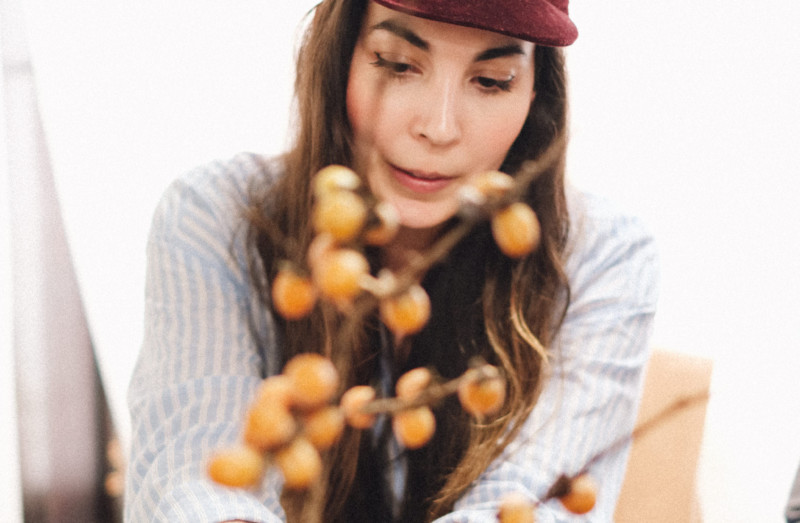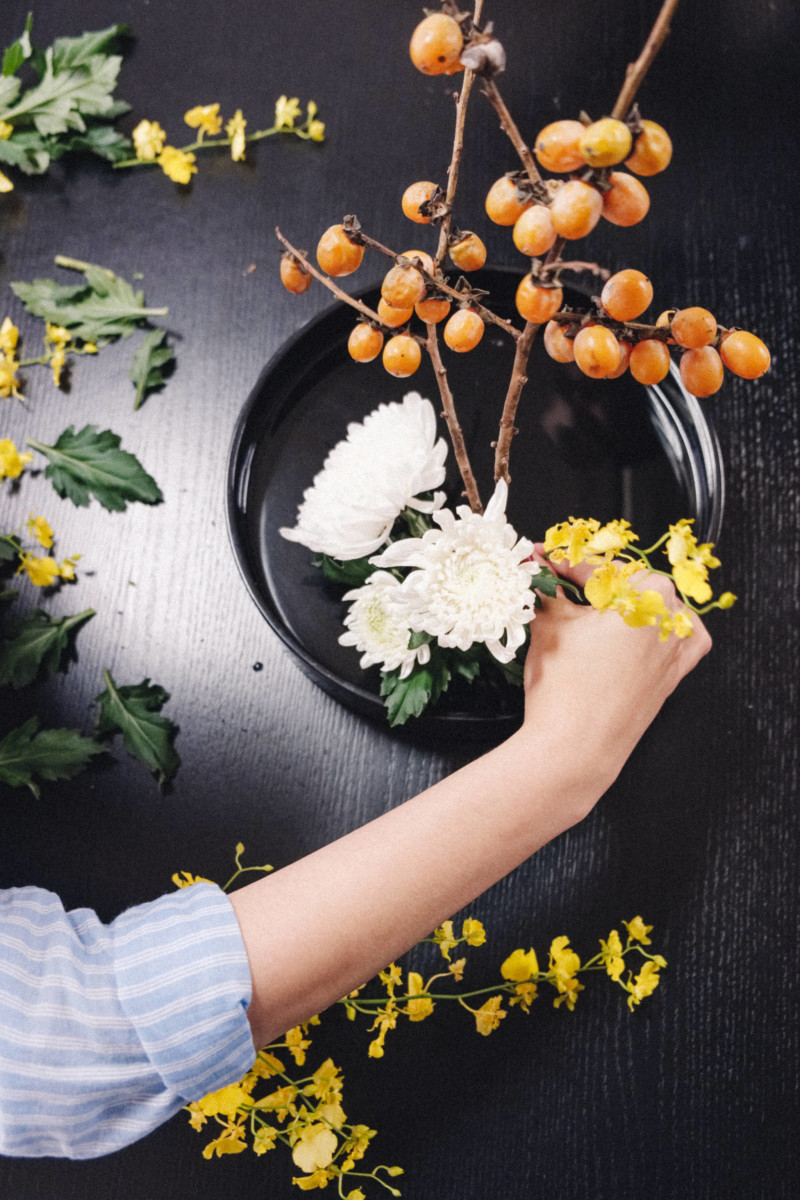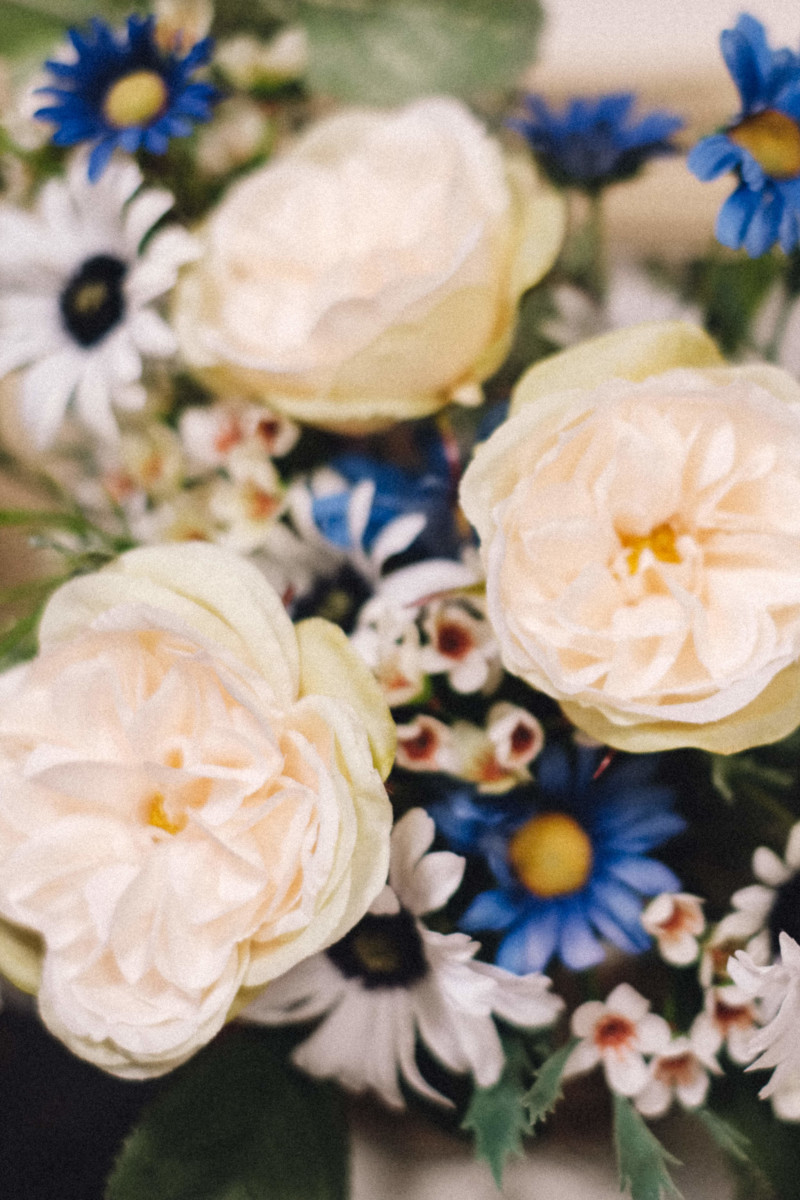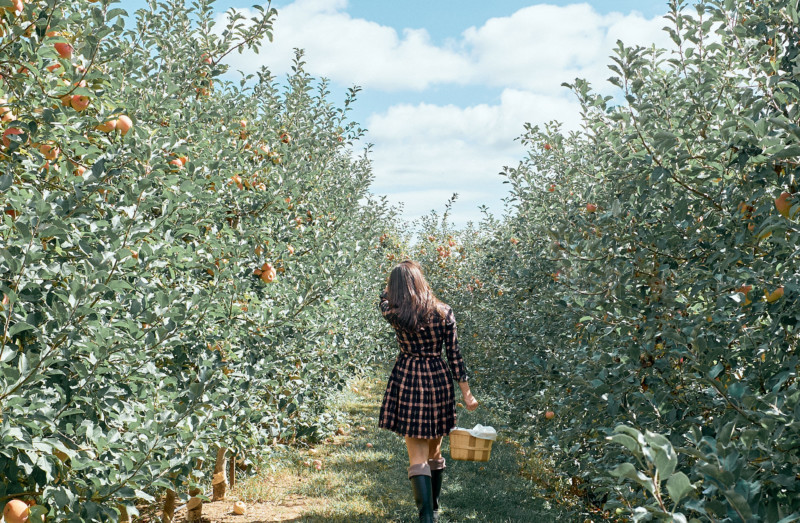My trip to Japan was incredible and full of many memorable moments. Unsurprisingly, one of the things I enjoyed the most was taking a lesson in ikebana – the unique and minimalistic art of flower arranging. I love flowers, and while I’m a complete amateur at making bouquets, I still thought it would be fascinating to find out about how ikebana is done, it’s history and the real art behind the process.
That’s where Masashi Kaki comes in – he’s a professional flower artist who teaches ikebana in Tokyo and creates floral displays for important events throughout Japan. I’ll admit I was a little overwhelmed at the start, but after teaching me how ikebana got started (floral offerings at altars), the many different schools of the craft (there are over 1,000 different kinds), and the desired result of the art, I was excited to get started.
We began with the basics: three types of flowers that Masashi picked fresh from the local flower market (a kumquat branch, white chrysanthemums, and small yellow orchids), a shallow vase, and the ever important spiky frog (or kenzan that impales the stems). And that’s it! To be honest, I was relieved by the narrowing of elements, however, when faced with determining the fate of my arrangement there was still a dramatic number of choices to be made.
As a warm up, my teacher went through the process of creating his own arrangement, so that I could see how he made decisions and allowed the flowers to dictate the form. He revealed how to create three main points to symbolize heaven, human, and earth – a goal of some schools of ikebana. His stunning arrangement took all of five minutes to make with an expert hand, but it is after years of practice and training. As we cleared the kenzan of the remaining stems, I was suddenly a bit stressed by the task of making something beautiful on my very first try.





It’s art, so technically there’s no wrong way to do it, but I don’t like the color orange and immediately had to accept and look past that to find what form spoke to me. It was hard! But step by step, I trimmed, considered and placed each stem as I saw fit, yielding to the plants’ desire rather than forcing my own structure. Slowly the arrangement emerged. With fewer flowers to chose from I was able to experiment with shape, line, and form (another goal of ikebana that showcases the beauty in nature). The visually heavier chrysanthemums wanted to be near the base, while the feathery orchids were looking to be added as flair at the end. Meanwhile, the sturdy kumquat branch formed the strong visual lines at the heart of the arrangement.





When I finally finished almost an hour later I was delighted and proud of what I had done. The process is incredibly humbling, meditative, and an exercise in releasing control. You don’t need to do as much as you think, just let the flowers, and subsequently, nature, tell you what’s next. I interpret it as a metaphor for life: trust in the process, allow the natural order of things to guide you, and find the beauty in the imperfections.
And then I realized, ikebana wasn’t really about the flowers, but rather a practice for living a better life.
Have you ever tried ikebana or other forms of flower arranging? What did you think? Share your thoughts with me in the comments below! Special thanks to my teacher Masashi Kaki, and if you make a trip to Tokyo, please, please, please, make sure you book a lesson with him – you will be equally delighted! Check out his website and reviews on TripAdvisor for more information.








